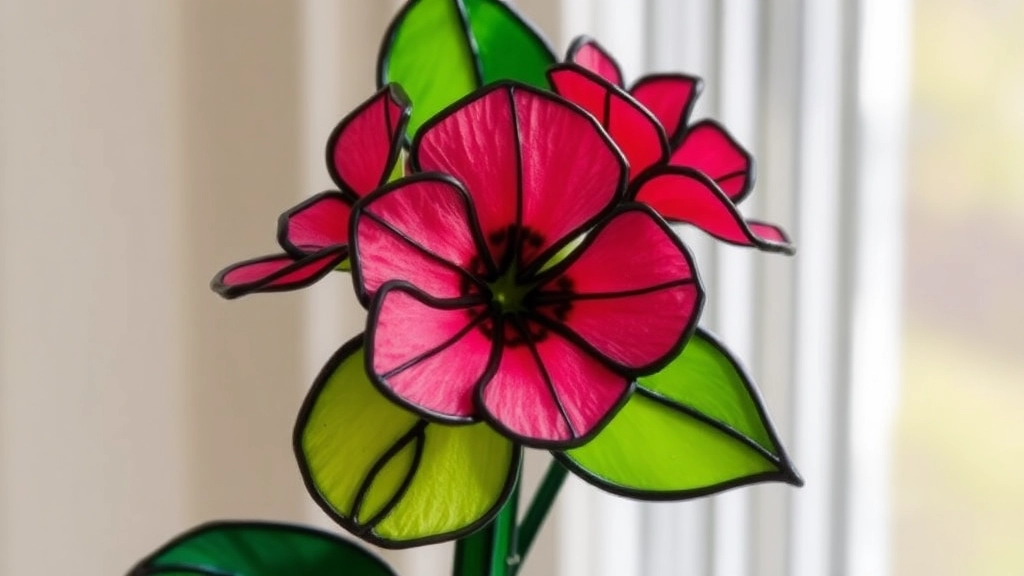Kalanchoe Stained Glass Care
If you’re diving into Kalanchoe stained glass care, you’ve come to the right place. I’m here to share some straightforward tips to keep your plant thriving. From watering schedules to light requirements, I’ll cover the essentials to ensure your Kalanchoe looks its best.
Light Requirements
First off, let’s talk about light. Your Kalanchoe stained glass plant loves bright, indirect sunlight. Too much direct sunlight can scorch its leaves, so find a spot that gets plenty of natural light but is shielded from harsh rays.
Watering Tips
Next, water your plant when the top inch of soil feels dry. Overwatering can lead to root rot, so it’s crucial to let the soil dry out between waterings.
Optimal Light Conditions for Kalanchoe Stained Glass
Are you struggling to get your Kalanchoe Stained Glass to thrive? One of the most crucial factors for success lies in providing the right light conditions.
Kalanchoe Stained Glass, known for its vibrant foliage and stunning blooms, requires specific lighting to flourish. Here’s what you need to know:
Ideal Temperature and Humidity Levels
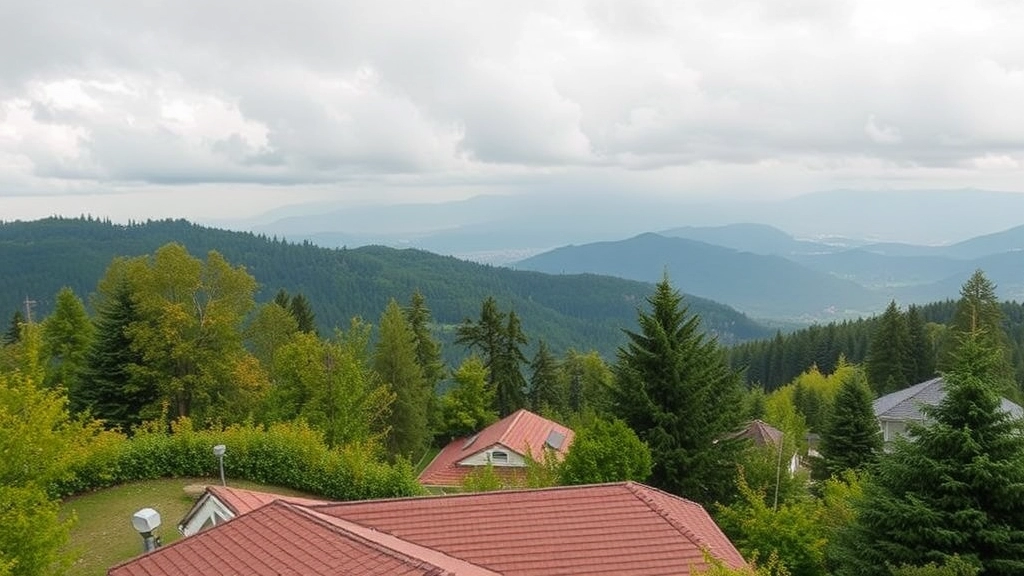
So, you’ve got your Kalanchoe Stained Glass, and now you’re wondering about the perfect temperature and humidity to keep it thriving, right?
Temperature Needs
These beauties love warmth. Ideally, you want to keep them in a range of 18°C to 24°C (65°F to 75°F).
- Too Cold? If temperatures drop below 10°C (50°F), your plant might start to sulk.
- Too Hot? Anything above 30°C (86°F) can stress it out.
Humidity Levels
Kalanchoes are pretty chill about humidity, but they prefer it on the lower side. Aim for around 40% to 60% humidity.
- Low Humidity? If your home is dry, consider misting occasionally or placing a tray of water nearby.
- High Humidity? Too much moisture can lead to rot. Make sure your space has good airflow.
Quick Tips
- Avoid drafts: Keep them away from chilly windows or air conditioning vents.
- Consistency is key: Sudden temperature changes can shock the plant.
Watering Schedule and Techniques
When it comes to caring for your Kalanchoe Stained Glass, understanding the watering schedule and techniques is crucial. Many plant enthusiasts often worry about how much and how often to water their succulents.
Soil Requirements and Potting Mix for Kalanchoe Stained Glass
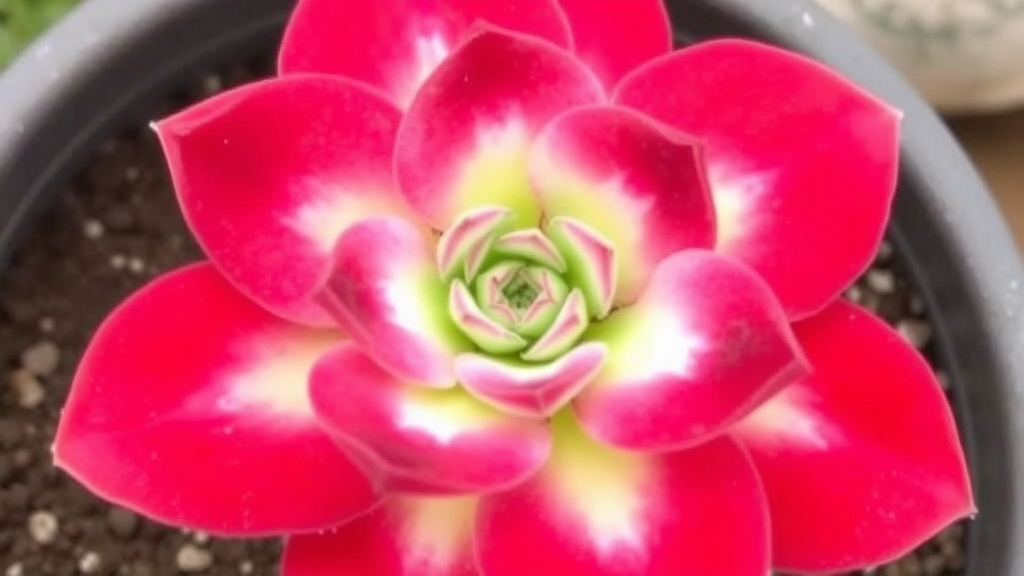
As we delve deeper into caring for your Kalanchoe Stained Glass, understanding its soil needs is crucial. The right potting mix can significantly influence the plant’s health and blooming potential.
Choosing the Right Soil
Kalanchoe thrives in well-draining soil that mimics its native environment. Here are the key components to consider:
- Cactus Mix: A commercial cactus mix is an excellent choice due to its drainage properties.
- Perlite or Pumice: Adding these materials enhances aeration and drainage, preventing root rot.
- Organic Matter: Incorporating some organic material, like compost, can provide essential nutrients without compromising drainage.
Ideal Potting Mix Recipe
For those inclined to create their own potting mix, consider this simple recipe:
- 50% Cactus Mix
- 30% Perlite or Pumice
- 20% Organic Compost
This blend ensures your Kalanchoe receives adequate moisture while allowing excess water to escape.
Potting Considerations
When potting your Kalanchoe, keep the following in mind:
- Pot Size: Choose a pot that is slightly larger than the root ball to allow for growth.
- Drainage Holes: Ensure the pot has adequate drainage holes to prevent water accumulation.
Signs of Soil Issues
Be vigilant about your plant’s health. Signs that your Kalanchoe may be experiencing soil-related issues include:
- Yellowing Leaves: This could indicate overwatering or poor drainage.
- Stunted Growth: A lack of nutrients or compacted soil can hinder growth.
By selecting the right soil and potting mix, you set the foundation for a thriving Kalanchoe Stained Glass.
Fertilization Guidelines
Are you wondering how to keep your Kalanchoe Stained Glass vibrant and flourishing? Fertilisation is key to ensuring your plant thrives.
VI. Pruning and Deadheading Practices
So, you’ve got your Kalanchoe Stained Glass looking fabulous, but how do you keep it that way?
Pruning and deadheading are your go-to techniques for maintaining a healthy, vibrant plant.
Why Prune?
- Encourages Growth: Regular pruning helps promote new growth and keeps your plant looking lush.
- Prevents Disease: Removing dead or damaged leaves can help prevent diseases from taking hold.
- Enhances Appearance: A well-pruned plant is just more visually appealing!
When to Prune
- After Blooming: The best time to prune is right after flowering. This gives your plant a chance to focus on new growth.
- Regular Checks: Keep an eye on your plant throughout the year. If you notice any wilted or yellow leaves, it’s time for a trim.
How to Prune
- Use Clean Tools: Always use sharp, clean scissors or pruning shears to avoid spreading diseases.
- Cut at the Base: Trim leaves back to their base to encourage new growth.
- Don’t Overdo It: Only remove about 20-30% of the plant at a time. Too much can stress it out.
Deadheading for Longer Blooms
Deadheading is simply the act of removing spent flowers. This not only keeps your plant looking tidy but also encourages more blooms.
- How to Deadhead:
- Pinch or cut off the faded flowers at their base.
- Regularly check for spent blooms, especially after a flowering cycle.
Common Pests and Diseases
As we explore the care of Kalanchoe Stained Glass, it’s essential to address the potential threats posed by pests and diseases. Understanding these common issues can help ensure your plant thrives.
Common Pests
Kalanchoe Stained Glass can attract several pests, which can hinder its growth and affect its vibrant appearance. Here are the most common culprits:
- Mealybugs: These small, white insects often hide in leaf axils. They feed on plant sap, leading to yellowing leaves.
- Aphids: Tiny and green or black, aphids can cluster on new growth, causing distortion and stunted growth.
- Spider Mites: These minuscule pests thrive in dry conditions and can create webbing on the plant. Their feeding can lead to speckled leaves.
- Scale Insects: These appear as small, brown bumps on stems and leaves. They suck sap and can lead to leaf drop.
Common Diseases
In addition to pests, Kalanchoe Stained Glass can suffer from various diseases, primarily due to improper care:
- Root Rot: Often caused by overwatering, this disease occurs when roots sit in soggy soil. Symptoms include wilting and a foul smell from the roots.
- Powdery Mildew: This fungal disease appears as a white, powdery coating on leaves. It thrives in high humidity and poor air circulation.
- Leaf Spot: Caused by bacteria or fungi, leaf spot manifests as dark, water-soaked areas on the leaves, leading to premature leaf drop.
Prevention and Treatment
To keep your Kalanchoe Stained Glass healthy, consider these preventative measures:
- Regular Inspection: Check your plant weekly for signs of pests or disease. Early detection can save your plant.
- Proper Watering: Ensure you’re not overwatering, as this is a primary cause of root rot.
- Good Air Circulation: Position your plant in a well-ventilated area to prevent fungal diseases.
If you do encounter pests or diseases, here are some treatment options:
- Insecticidal Soap: Effective against mealybugs and aphids, spray it directly on the pests.
- Neem Oil: A natural remedy that can treat various pests and diseases. Apply it as directed.
- Remove Infected Leaves: For diseases like leaf spot, prune away affected areas to prevent spread.
For more detailed information on caring for your Kalanchoe, check out our Complete Care Guide for Kalanchoe Blossfeldiana and learn how to prevent common issues. Additionally, if you are dealing with specific problems like root rot, our Kalanchoe Panda Plant Care Guide offers targeted advice.
Propagation Methods
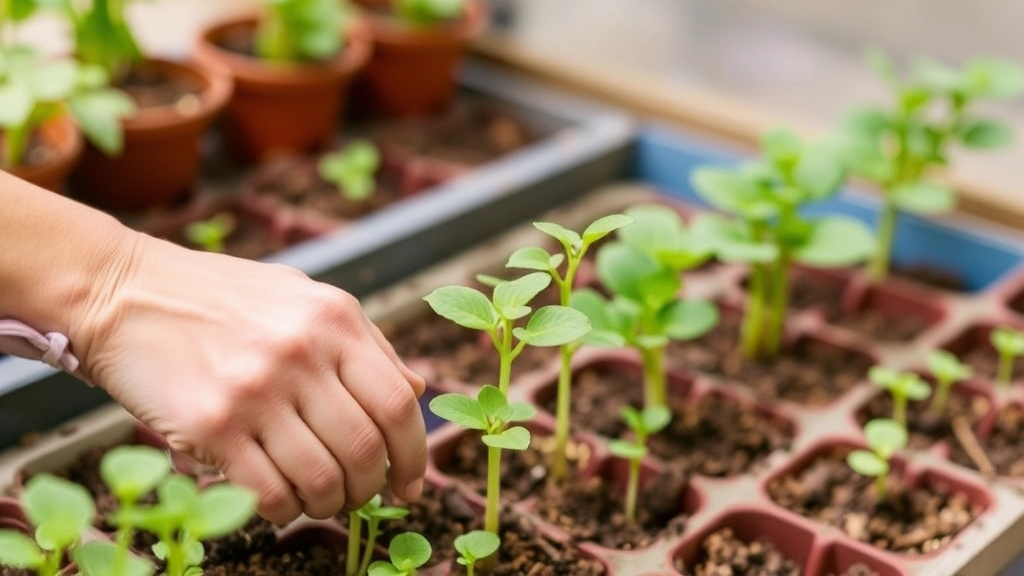
So, you’ve got a thriving Kalanchoe Stained Glass and you’re wondering how to multiply that beauty? You’re in the right place!
Why Propagate?
Propagation is a fantastic way to expand your plant collection without breaking the bank. Plus, who doesn’t love sharing a bit of greenery with friends?
Methods of Propagation
- Leaf Cuttings
- Choose healthy leaves from your plant.
- Cut them cleanly at the base.
- Let them dry for a day or two to form a callus.
- Place in well-draining soil and water lightly.
- Stem Cuttings
- Snip a healthy stem about 4-6 inches long.
- Remove the lower leaves.
- Allow it to callus for a day.
- Plant in soil and keep it moist but not soggy.
- Offsets
- Look for baby plants (offsets) at the base of your Kalanchoe.
- Gently twist or cut them away from the parent plant.
- Replant in a small pot with fresh soil.
Tips for Successful Propagation
- Light: Keep cuttings in bright, indirect light.
- Humidity: A bit of humidity helps, so consider a mini greenhouse or a plastic bag over the pot.
- Patience: It can take a few weeks for roots to develop, so don’t rush it!
As we transition through the seasons, it’s essential to adapt our care routines for Kalanchoe Stained Glass to ensure they thrive. Many plant enthusiasts often wonder how to best care for their Kalanchoe as the weather changes.
**Spring Care**
– **Repotting**: Spring is an excellent time to repot your Kalanchoe if it has outgrown its current container.
– **Watering**: Increase watering frequency as temperatures rise, but ensure the soil dries out between sessions.
– **Fertilisation**: Start using a balanced fertiliser every four to six weeks to promote new growth.
**Summer Care**
– **Light Exposure**: Ensure your Kalanchoe receives bright, indirect sunlight. Too much direct sun can scorch the leaves.
– **Humidity**: While Kalanchoe can tolerate lower humidity, consider misting occasionally during heatwaves to keep them comfortable.
– **Pest Monitoring**: Keep an eye out for pests like aphids and mealybugs, which can be more active in warmer months.
**Autumn Care**
– **Watering Adjustments**: As temperatures begin to drop, reduce your watering frequency.
– **Pruning**: This is a good time to prune back any leggy growth to encourage bushier plants.
– **Temperature Awareness**: Prepare your Kalanchoe for cooler nights by bringing them indoors if they are in pots.
**Winter Care**
– **Light Needs**: Ensure your plant gets enough light during shorter days. Consider using grow lights if necessary.
– **Watering**: Be cautious with watering; Kalanchoe needs less moisture in winter. Always check the soil moisture before watering.
– **Temperature Control**: Keep your Kalanchoe away from cold drafts and heating vents to prevent stress.
Repotting and Transplanting Kalanchoe Stained Glass
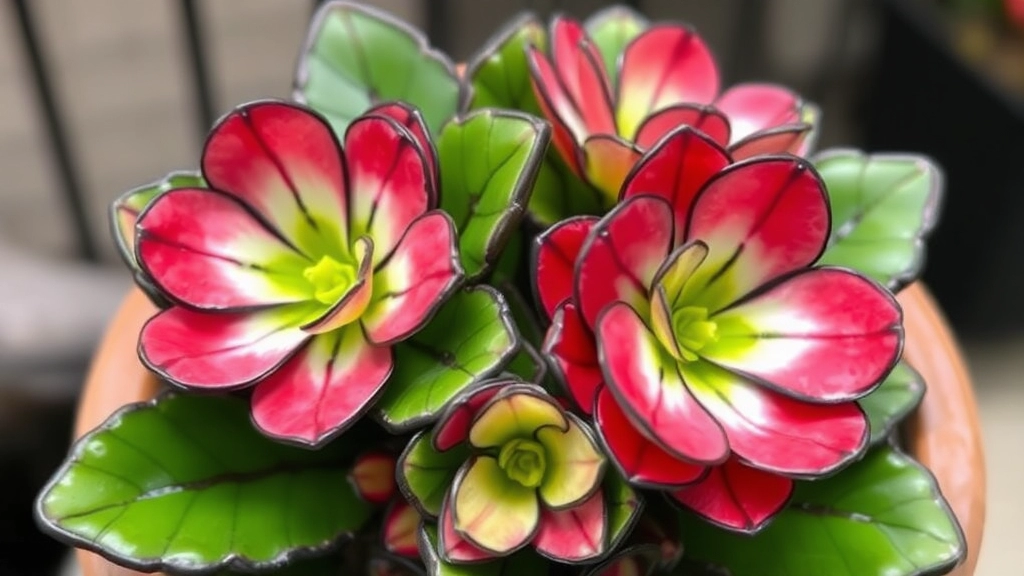
So, you’re wondering when and how to repot your Kalanchoe Stained Glass? It’s a common concern for plant parents, and I’m here to break it down for you.
Why Repot?
Repotting is essential for a thriving plant. It gives your Kalanchoe fresh soil, more space, and the nutrients it craves.
- When to Repot:
- Every 1-2 years, or when you notice roots poking out of the drainage holes.
- If the plant is top-heavy or seems to be outgrowing its pot.
How to Repot
- Choose the Right Pot:
- Pick a pot that’s 1-2 inches larger in diameter.
- Ensure it has drainage holes to prevent waterlogging.
- Prepare Your Soil:
- Use a well-draining cactus or succulent mix.
- You can also mix potting soil with perlite for extra drainage.
- Remove the Plant:
- Gently squeeze the pot to loosen the soil.
- Carefully lift the plant out, supporting the base.
- Inspect the Roots:
- Look for any brown or mushy roots. Trim these away.
- Healthy roots should be white or light tan.
- Plant It Up:
- Add some fresh soil to the bottom of the new pot.
- Place your Kalanchoe in the centre and fill around it with more soil.
- Firm it down gently but don’t pack it too tightly.
- Watering After Repotting:
- Give it a light watering after repotting.
- Wait about a week before watering again to let it settle.
Transplanting Tips
If you’re moving your Kalanchoe to a different location rather than just a new pot, keep these in mind:
- Timing: Spring or early summer is ideal for transplanting.
- Acclimatization: Gradually introduce it to the new environment to reduce shock.
- Light Conditions: Make sure it’s still getting optimal light after the move.
Repotting and transplanting can seem daunting, but it’s a perfect opportunity to give your Kalanchoe a fresh start.
Signs of Overwatering and Underwatering
When caring for your Kalanchoe Stained Glass, understanding the signs of overwatering and underwatering is crucial. Many plant enthusiasts worry about their plants’ health, and rightly so. Too much or too little water can lead to serious issues.
Signs of Overwatering
Overwatering is a common problem, especially for those new to succulent care. Here are some clear indicators:
- Yellow Leaves: If the leaves start turning yellow, it’s often a sign of excess moisture.
- Soft, Mushy Stems: Healthy stems should feel firm. If they’re squishy, it’s time to reassess your watering habits.
- Root Rot: This can be identified by a foul smell from the soil or blackened roots when you check.
- Wilting Leaves: Ironically, overwatered plants can also wilt due to root damage.
Signs of Underwatering
On the flip side, underwatering can also lead to distress. Look out for these signs:
- Crispy, Brown Edges: Leaves may develop dry, brown edges or tips.
- Shrivelled Appearance: If the leaves look shrivelled or deflated, your plant is thirsty.
- Leaf Drop: A sudden loss of leaves can indicate that your plant is not getting enough moisture.
Finding the Balance
To ensure your Kalanchoe Stained Glass thrives, aim for a balanced watering routine.
- Check the Soil: Always feel the top inch of soil before watering. If it’s dry, it’s time to hydrate.
- Use Well-Draining Soil: This helps prevent water from sitting around the roots.
- Water Sparingly: During the winter months, reduce watering frequency as the plant enters dormancy.
For more detailed tips, you might find our best practices for indoor and outdoor care helpful. Additionally, if you’re dealing with leaf issues, our guide on causes, treatment, and prevention of leaf spot can provide valuable insights.
Enhancing Bloom Longevity for Kalanchoe Stained Glass
Have you ever wondered how to keep your Kalanchoe Stained Glass blooming longer?
It’s a common worry among plant lovers, but with a few simple tips, you can enjoy vibrant flowers for weeks.
Here’s what you need to know to enhance the bloom longevity of your stunning Kalanchoe.
FAQs on Kalanchoe Stained Glass Care
What is the ideal temperature range for Kalanchoe Stained Glass?
The ideal temperature range for Kalanchoe Stained Glass is between 18°C to 24°C (65°F to 75°F). Avoid temperatures below 10°C (50°F) and above 30°C (86°F).
How much humidity does Kalanchoe Stained Glass need?
Kalanchoe Stained Glass prefers humidity levels between 40% to 60%. Too much moisture can lead to rot, so ensure good airflow.
What type of soil is best for Kalanchoe Stained Glass?
Kalanchoe Stained Glass thrives in well-draining soil. A commercial cactus mix, enhanced with perlite or pumice, and some organic compost is ideal.
How often should I repot my Kalanchoe Stained Glass?
Repot your Kalanchoe Stained Glass every 1-2 years or when you notice roots poking out of the drainage holes.
What are the signs of soil-related issues in Kalanchoe Stained Glass?
Signs of soil-related issues include yellowing leaves, which could indicate overwatering or poor drainage, and stunted growth, which may result from a lack of nutrients or compacted soil.
When is the best time to prune Kalanchoe Stained Glass?
The best time to prune is right after flowering. Regular checks throughout the year for wilted or yellow leaves are also recommended.
How do I propagate Kalanchoe Stained Glass?
You can propagate Kalanchoe Stained Glass through leaf cuttings, stem cuttings, or offsets. Ensure you allow cuttings to form a callus before planting them in well-draining soil.
Why should I deadhead my Kalanchoe Stained Glass?
Deadheading, or removing spent flowers, keeps the plant tidy and encourages more blooms.
What should I consider when choosing a pot for Kalanchoe Stained Glass?
Choose a pot that is slightly larger than the root ball and has adequate drainage holes to prevent water accumulation.
How should I water my Kalanchoe Stained Glass after repotting?
Give it a light watering after repotting and wait about a week before watering again to allow the plant to settle.
Can I transplant my Kalanchoe Stained Glass to a different location?
Yes, you can transplant it. The best time is during spring or early summer. Gradually introduce the plant to the new environment to reduce shock and ensure it still gets optimal light.
References
-
Kalanchoe Plant Care â How To Grow A Kalanchoe
-
How to Grow and Care for Kalanchoe
-
Kalanchoe: How to Grow and Care for Kalanchoe Plants
